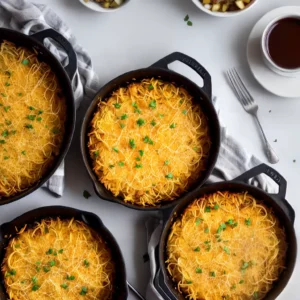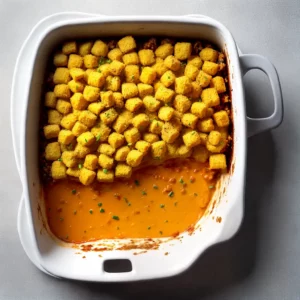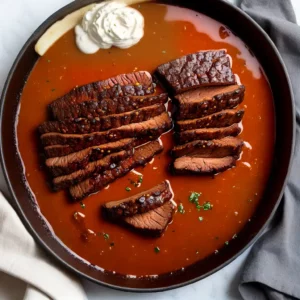How Many Grams Are in a Pound
Hey there! Are you curious about how to convert grams to pounds? Look no further! In this comprehensive guide, I’ll walk you through everything you need to know about converting between these two units of weight. Whether you’re a cooking enthusiast or just want to brush up on your measurement skills, this guide has got you covered.
But first, let’s start with the basics. Grams and pounds may sound familiar, but do you know the key differences between them? The metric system uses grams as a unit of weight, while the Imperial system uses pounds. Grams are typically used for measuring small quantities, like spices or liquids, whereas pounds are used for larger quantities, like produce or meat.
Now, let’s dive into the fascinating history behind pounds. Did you know that the term “pound” originated from the Roman unit of measure called Libra Pondo? The abbreviation “lbs” comes from the Latin word Libra. Over time, the pound has undergone various changes in weight, but today, it is widely used in the United States and other countries that follow the Imperial system of measurement.
On the other hand, the gram made its debut in France after the French Revolution. Since then, it has become the go-to unit of measurement for weight in many countries around the world. Understanding how to convert grams to pounds is crucial, especially when it comes to precise ingredient measurements in recipes.
To ensure accurate conversions, it’s important to have the right equipment at hand. A digital kitchen scale, conversion charts, and measuring cups/spoons are essential tools for achieving precise measurements. Whether you’re whipping up a delicious cake or experimenting with new flavors, having the correct measurements can make all the difference.
Keep in mind that different systems of measurement are used in different regions. The United States, for example, follows the Imperial System, which employs pounds and ounces for weight measurements. In contrast, the metric system, based on the powers of ten, uses grams for weight and milliliters for liquids.
In this guide, we’ll explore conversion formulas, conversion tables, and other helpful tips to make the process of converting grams to pounds (and vice versa) a breeze. So, let’s get started on this weighty adventure together!
Key Takeaways – How Many Grams Are in a Pound:
- Grams and pounds are used to measure weight, with grams typically used for small quantities and pounds for larger quantities.
- The term “pound” comes from the Roman unit of measure Libra Pondo, and it has evolved over time in weight.
- The gram was introduced in France after the French Revolution and is now widely used as a unit of measurement.
- Accurate measurements in cooking and baking rely on precise conversions between grams and pounds.
- Having the right equipment, such as a digital kitchen scale, conversion charts, and measuring cups/spoons, is essential for accurate conversions and measurements.
Understanding Grams and Pounds
When it comes to measuring weight, two commonly used units are grams and pounds. The gram is the metric unit of mass, while the pound is part of the Imperial System of measurement. Understanding the differences between these units is crucial for accurate weight conversions.
The pound, abbreviated as “lbs,” has a long history that dates back to ancient Rome. The term “pound” comes from the Roman unit of measure known as Libra Pondo. Over time, the weight of a pound has varied, with different countries adopting their own standards. In the United States and several other countries, the pound is part of the Imperial System.
The gram, on the other hand, was introduced in France following the French Revolution and is now widely used throughout the world. It is especially useful for measuring smaller quantities, such as ingredients in cooking and baking. In fact, precise conversions from grams to pounds are essential for accurate recipe measurements.
| Grams | Pounds |
|---|---|
| 1 | 0.00220462 |
| 100 | 0.220462 |
| 1000 | 2.20462 |
When it comes to equipment, having the right tools is essential for accurate measurements. A digital kitchen scale is a handy device that can provide precise weight readings in both grams and pounds. Additionally, conversion charts can be useful references for quickly converting between the two units.
In conclusion, understanding the difference between grams and pounds is important for various applications, particularly in the kitchen. While the Imperial System uses pounds for weight measurement, the metric system, including grams, is used worldwide. By knowing how to convert between these units and having the right equipment on hand, accurate measurements can be achieved, ensuring successful cooking and baking endeavors.

When we think of weight measurement, the pound is a unit that immediately comes to mind. But have you ever wondered about the origins of this widely used unit? The pound has a fascinating history that stretches back centuries.
The term “pound” is derived from the Roman unit of measure called Libra Pondo, meaning “a pound in weight.” The abbreviation “lbs” comes from the Latin word Libra. Over time, the pound has undergone numerous changes in weight, varying from region to region and era to era.
It wasn’t until the French Revolution that a standardized unit of mass, called the gram, was introduced in France. This unit of measurement quickly gained popularity and is now widely used around the world. The gram is used to measure smaller quantities, while the pound is typically used for larger amounts.
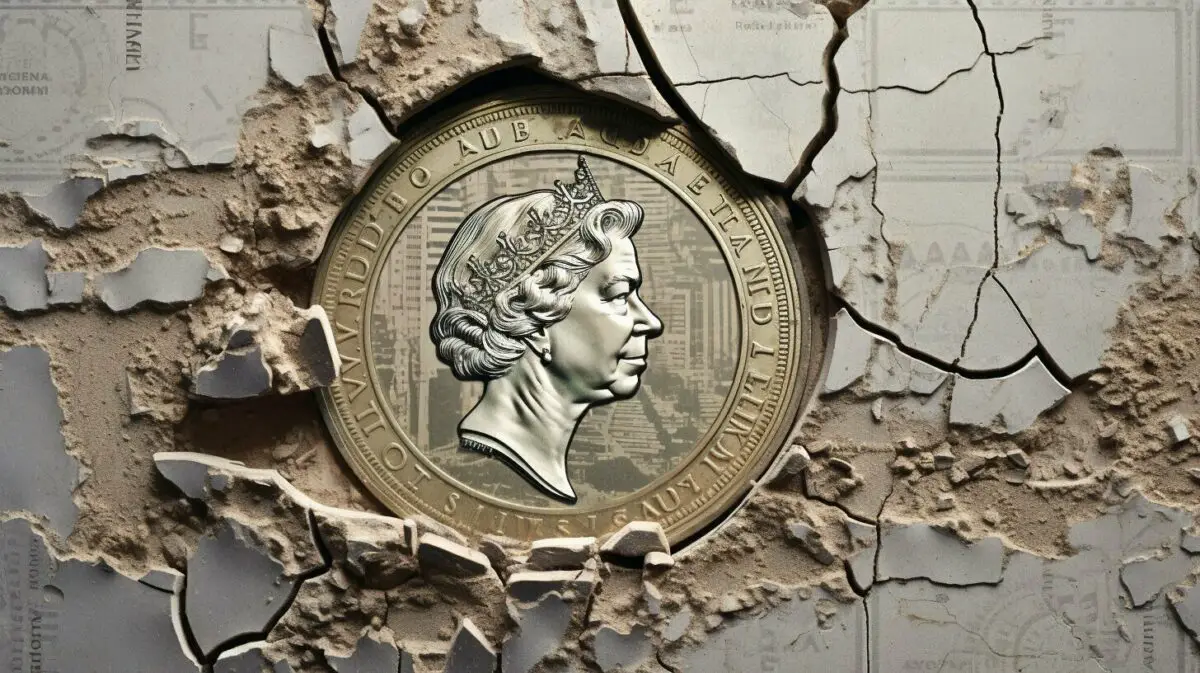
The pound is an integral part of the British imperial system of measurement, which spread across the world during the British Empire’s heyday. Countries like the United States still use this system today. In the British imperial system, the pound is divided into 16 ounces, and each ounce is further divided into 16 drams. This system is primarily used for measuring weight and mass.
| Unit | Abbreviation | Equivalent Metric Value |
|---|---|---|
| Pound | lb | 453.592 grams |
| Ounce | oz | 28.3495 grams |
| Dram | dr | 1.7718 grams |
On the other hand, the metric system, which is used worldwide, including in France where the gram was introduced, is based on the powers of ten. This makes scaling and conversion between different units of measurement much simpler and more intuitive.
Understanding the history of the pound and its relationship with the gram is essential for anyone involved in measurement and conversion. Whether you’re a home cook, a scientist, or simply curious about the world around us, knowing how to convert between grams and pounds is an invaluable skill that allows for precise ingredient measurements and a deeper understanding of weight and mass.
Introducing the Gram
In the world of weights and measurements, the gram is a unit that plays a crucial role. The gram was introduced in France following the French Revolution and has since become widely used for measuring weight in many countries. As a metric unit of mass, the gram provides a precise measurement for small amounts of ingredients.
With 453.592 grams in a pound, understanding how to convert grams to pounds is essential for accurate ingredient measurements in various recipes. Whether you’re an avid home cook or a professional chef, having the ability to convert between these weight units will greatly enhance your culinary skills.
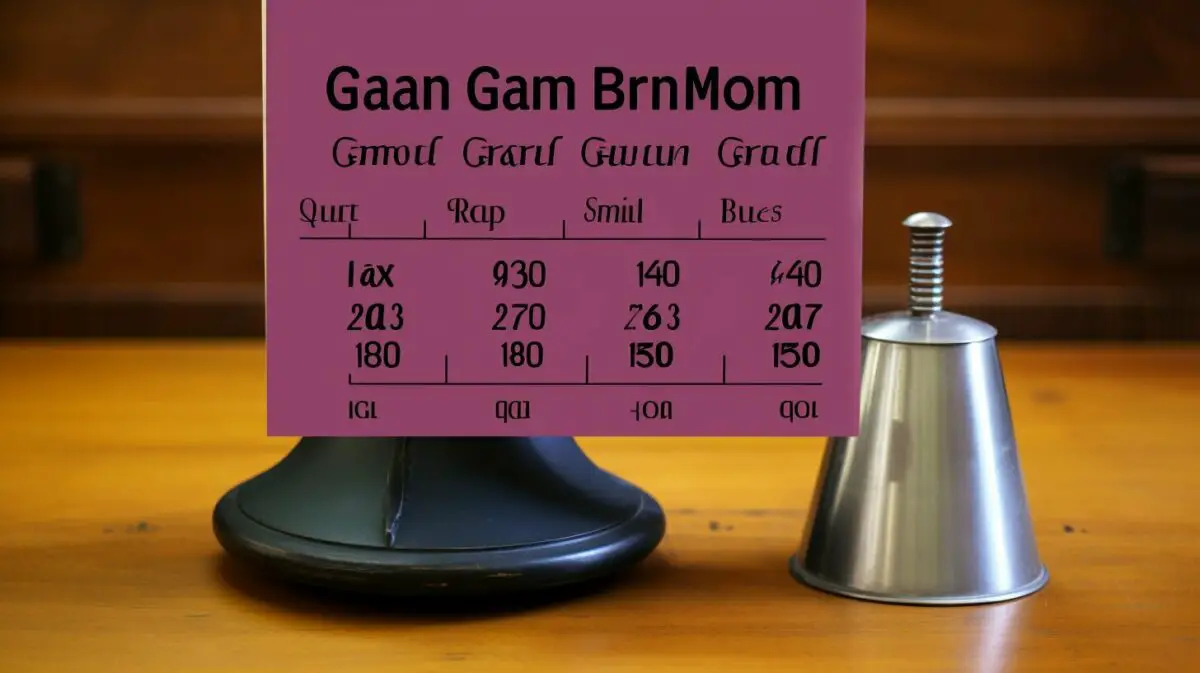
When it comes to accurate measurements, having the right equipment is crucial. A digital kitchen scale is a handy tool that will help ensure precise ingredient weights. Additionally, having access to conversion charts and accurate measuring cups and spoons will further assist in obtaining accurate measurements for your culinary creations.
Grams and Pounds: Understanding the Difference
It’s worth noting that different countries utilize different systems of measurement. While the Imperial System, with its pounds and ounces, is widely used in the United States, the metric system, with its grams and kilograms, is used worldwide. Understanding the difference between these two systems will enable you to navigate recipes and ingredient measurements more effectively.
One of the advantages of the metric system is its base-10 nature. As such, scaling and converting between metric units, such as grams and kilograms, is much simpler compared to the Imperial System. This ease of conversion makes the metric system a popular choice for scientific and culinary purposes, as it allows for precise and consistent measurements.
In summary, a solid grasp of the gram as a unit of weight measurement is invaluable for anyone who enjoys cooking or baking. Knowing how to convert grams to pounds accurately will enhance your culinary adventures and ensure that your recipes turn out just right. So, whether you’re measuring flour for a cake or portioning out spices for a flavorful dish, understanding the gram and its conversion to pounds is key.
The Importance of Conversion in Cooking
In the world of cooking and baking, precise measurements are essential for achieving the perfect results. Whether you’re a beginner in the kitchen or an experienced chef, understanding how to convert between grams and pounds is crucial for accurate ingredient measurements. Cooking is as much an art as it is a science, and precise measurements can make all the difference in the final outcome of your culinary creations.
When following a recipe, you’ll often come across ingredient measurements in grams or pounds. Grams are typically used for smaller quantities, such as spices, while pounds are used for larger quantities, such as meats or vegetables. Converting between these two units allows you to follow recipes from different sources and ensure consistency in your cooking.
Having the right equipment is also key to accurate measurements. A digital kitchen scale is a valuable tool that can help you measure ingredients precisely. It allows you to weigh ingredients in grams or pounds, eliminating any guesswork and ensuring that your recipes turn out as intended. Additionally, keeping a conversion chart handy or using measuring cups and spoons with both metric and imperial markings can greatly simplify the conversion process.
The Importance of Accurate Measurements in Recipes
“Accurate measurements are the foundation of successful recipes. Just a slight variation in ingredient quantities can significantly impact the taste, texture, and overall quality of your dishes. By converting grams to pounds and vice versa, you can ensure that each ingredient is added precisely, resulting in consistently delicious meals.”
Whether you’re baking a cake or preparing a savory dish, understanding the conversions between grams and pounds is essential for achieving culinary excellence. Accurate measurements contribute to the balance of flavors, the texture of baked goods, and the overall presentation of your dishes. With precise ingredient conversions, you can confidently create culinary masterpieces that will impress your family and friends.
So, the next time you embark on a cooking adventure, remember the importance of converting between grams and pounds. Embrace the precision, enhance your cooking skills, and let the delicious results speak for themselves.
| Grams to Pounds Conversion Table | Pounds to Grams Conversion Table | ||||||||||||||||||||
|---|---|---|---|---|---|---|---|---|---|---|---|---|---|---|---|---|---|---|---|---|---|
|
|
These conversion tables provide you with a quick reference for converting grams to pounds and pounds to grams. However, it’s important to note that these values are approximate and may vary slightly depending on the specific ingredient or product being measured. For precise measurements, always rely on a digital kitchen scale or follow the instructions provided in your recipe.
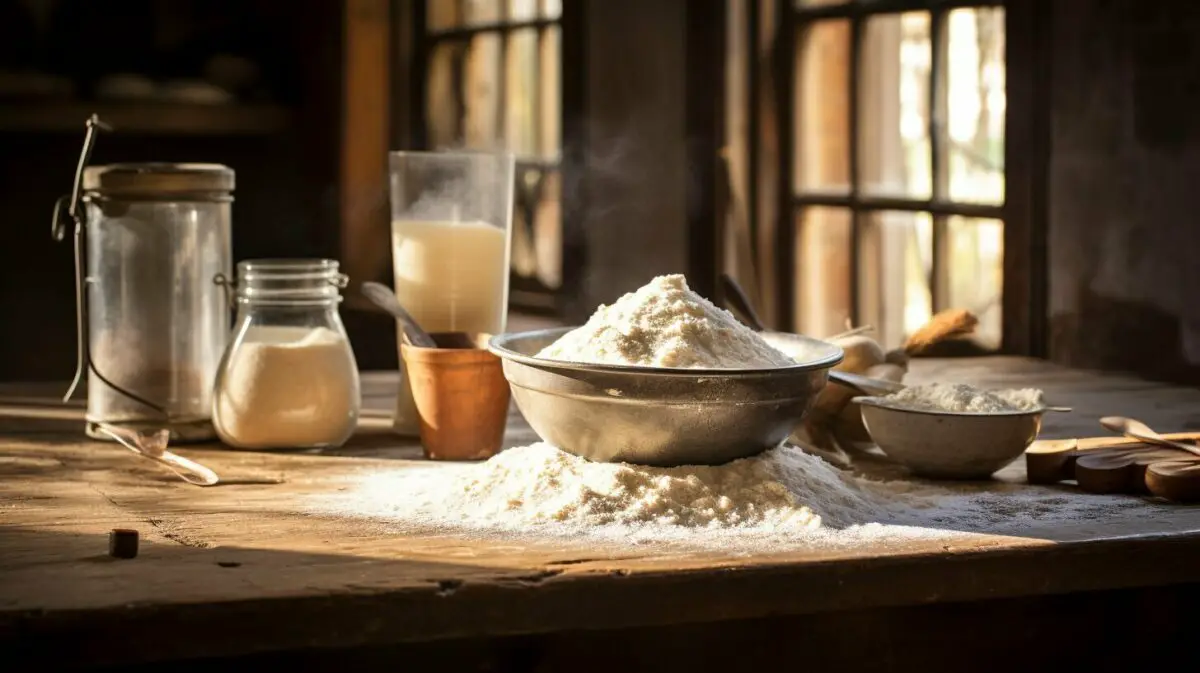
Remember, accurate ingredient measurements are the secret to culinary success. By understanding grams to pounds conversion and using the right equipment, you can elevate your cooking and baking to new heights. So, roll up your sleeves, put on your apron, and let the delicious journey begin!
Choosing the Right Equipment
When it comes to accurate measurements in the kitchen, having the right equipment is crucial. Whether you’re a seasoned chef or a casual home cook, using the proper tools can make a world of difference in your recipes.
A digital kitchen scale is an essential item for precise measurements. Unlike traditional scales, a digital scale provides accurate readings in grams and pounds with a clear display. This allows you to measure ingredients with precision, ensuring consistent results in your dishes.
In addition to a scale, it’s helpful to have a conversion chart on hand. This chart serves as a quick reference guide for converting between grams and pounds. It lists common ingredient weights in both measurements, making it easier to follow recipes from different sources.
When it comes to liquid ingredients, measuring cups and spoons are essential. These tools are designed to accurately measure volumes, allowing you to convert between different units of measurement effortlessly. Make sure to choose measuring cups and spoons that are marked with both metric and Imperial measurements for versatility in the kitchen.
A Useful Conversion Chart
| Grams | Pounds |
|---|---|
| 25 | 0.055 |
| 50 | 0.11 |
| 100 | 0.22 |
| 200 | 0.44 |
| 250 | 0.55 |
| 500 | 1.1 |
Having the right equipment, such as a digital kitchen scale, conversion chart, and measuring cups/spoons, can make all the difference in your cooking and baking endeavors. By ensuring accurate measurements, you’ll be able to follow recipes with confidence and achieve consistent results every time.

Remember, precision is key in the kitchen, and having the proper tools at your disposal will help you achieve that precision. So, take the time to invest in quality kitchen essentials, and you’ll be well-equipped to tackle any recipe that comes your way.
Grams to Pounds Conversion Formula
Converting grams to pounds is a necessary skill when it comes to precise ingredient measurements in recipes. Whether you’re a seasoned chef or a home cook, being able to accurately convert between these units of weight will ensure your dishes turn out just right. The conversion formula for grams to pounds is straightforward and easy to follow.
Here’s the conversion formula:
1 pound = 453.592 grams
To convert grams to pounds, simply divide the weight in grams by the conversion factor of 453.592. For example, if you have 500 grams, divide by 453.592 to get the equivalent weight in pounds. In this case, the result would be approximately 1.10231 pounds.
It’s worth noting that using a digital kitchen scale will provide the most accurate measurements when converting between grams and pounds. Having a reliable scale ensures precision in your recipe, especially when dealing with small or delicate ingredients.
Grams to Pounds Conversion Table
| Grams | Pounds |
|---|---|
| 100 | 0.220462 |
| 250 | 0.551155 |
| 500 | 1.10231 |
| 750 | 1.65347 |
| 1000 | 2.20462 |
Referencing a grams to pounds conversion table, like the one above, can be helpful when you need to quickly determine the weight equivalence for common amounts. Keep in mind that these values are approximate and rounding may occur.
Remember, mastering the conversion between grams and pounds opens up a world of culinary possibilities. It allows you to confidently follow recipes, experiment with new dishes, and achieve consistent results in your cooking. So grab your digital scale, refer to the conversion formula, and let your culinary adventures begin!
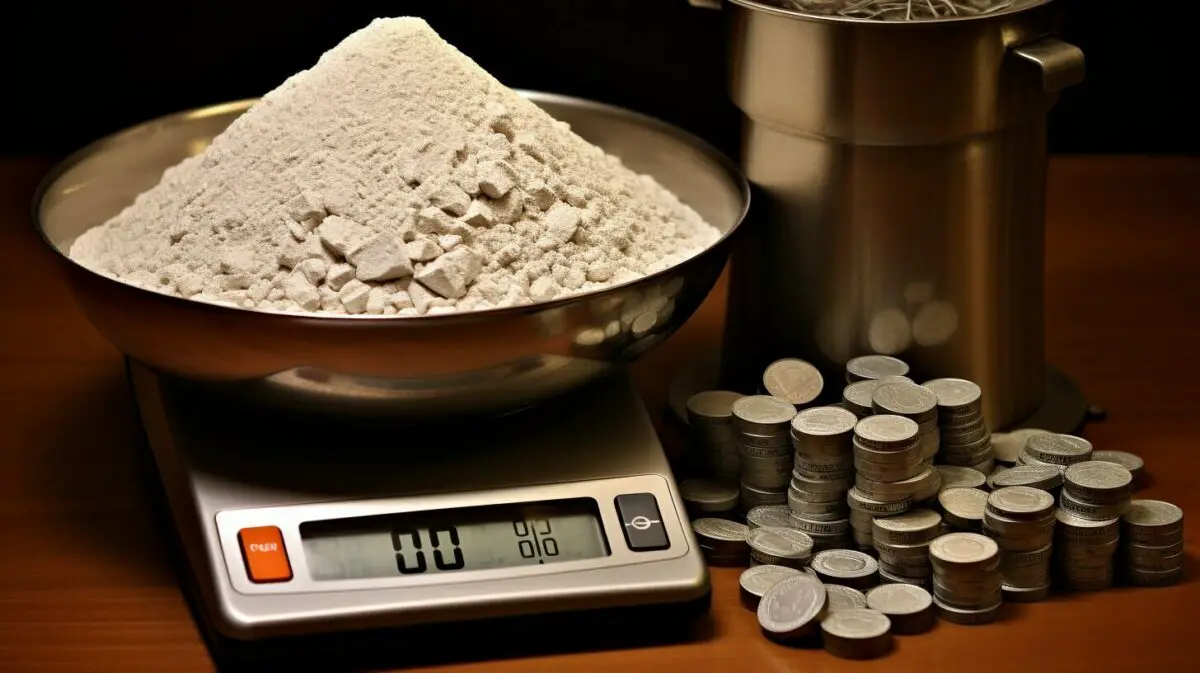
Converting pounds to grams is a common task when working with weight measurements. Whether you’re in the kitchen following a recipe that uses metric units or need to convert weight for international shipping, knowing how to convert pounds to grams is essential. Fortunately, the conversion formula is straightforward and easy to use.
To convert pounds to grams, simply multiply the weight in pounds by the conversion factor of 453.592. This conversion factor represents the number of grams in a pound. For example, if you have a weight of 2 pounds, the conversion would be:
2 pounds * 453.592 = 907.184 grams
So, 2 pounds is equal to 907.184 grams. It’s as simple as that! Remember to always use the conversion factor of 453.592 when converting pounds to grams to ensure accurate results.
Pounds to Grams Conversion Table
Having a pounds to grams conversion table can be helpful when you need to quickly convert different weights. Here is a handy conversion table that lists common pound-to-gram conversions:
| Pounds (lbs) | Grams (g) |
|---|---|
| 1 | 453.592 |
| 2 | 907.184 |
| 5 | 2267.96 |
| 10 | 4535.92 |
| 20 | 9071.84 |
Feel free to refer to this table as a quick reference when you need to convert pounds to grams. Simply find the weight in pounds and look up the corresponding value in grams.
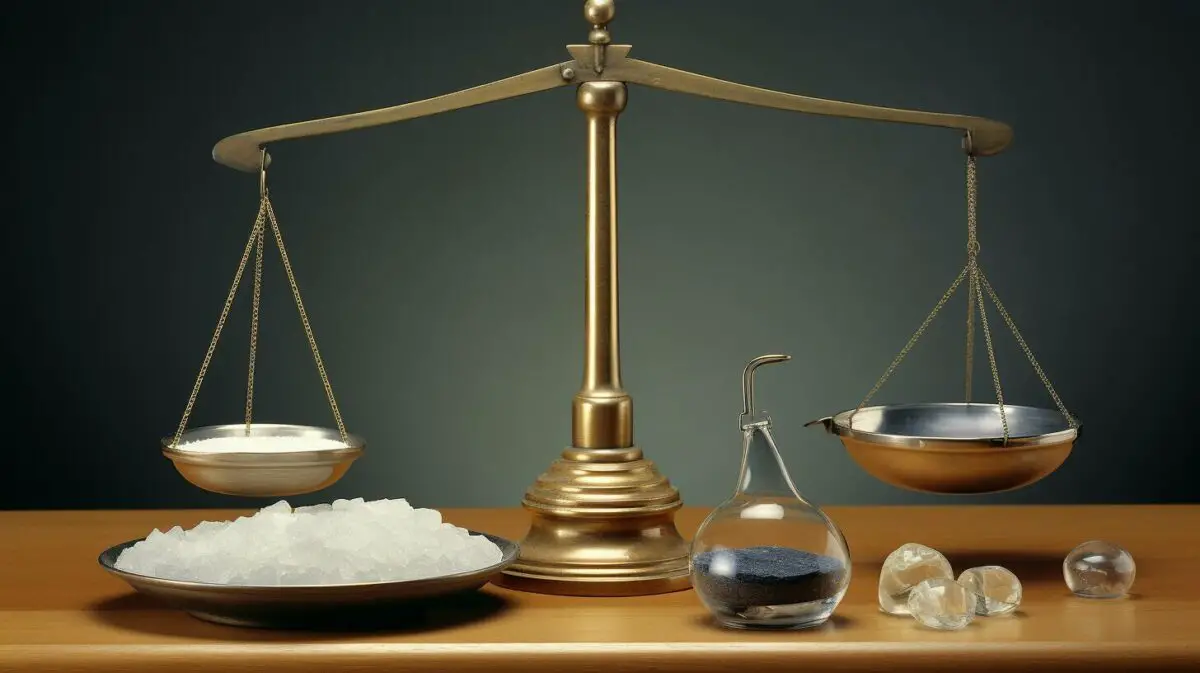
Remember, accurate measurements are crucial in many aspects of cooking, baking, and other activities that involve weight conversions. By knowing how to convert pounds to grams and having a conversion table at hand, you can ensure precise ingredient measurements and achieve the desired results in your recipes.
Conversion Factors and Ratios
When it comes to converting between grams and pounds, understanding conversion factors and ratios is key. These mathematical relationships allow us to accurately convert weights from one unit to another. By knowing the appropriate factors and ratios, you can easily perform conversions in your everyday life, whether you’re cooking in the kitchen or working on a scientific experiment.
Let’s start with the conversion factor for grams to pounds. There are 453.592 grams in a pound. This means that 1 gram is equal to 0.00220462 pounds. To convert grams to pounds, simply multiply the weight in grams by this conversion factor. For example, if you have 500 grams, you can calculate the equivalent weight in pounds by multiplying 500 by 0.00220462, which gives you 1.10231 pounds.
On the other hand, if you need to convert pounds to grams, you can use the reverse conversion factor. Divide the weight in pounds by 0.00220462 to get the equivalent weight in grams. For instance, if you have 2.5 pounds, dividing it by 0.00220462 gives you 1133.98 grams.
Proportion Conversion Method – How Many Grams Are in a Pound
Another way to convert between grams and pounds is by using proportions. To do this, set up a ratio with the known conversion factor and the unknown weight you want to convert. For example, if you want to convert 700 grams to pounds, set up the proportion:
453.592 grams / 1 pound = 700 grams / x pounds
Cross-multiply and solve for x to find the weight in pounds. In this case, multiplying 453.592 by 700 and then dividing by 1 gives you approximately 1543.45 pounds.
Conversely, if you have a weight in pounds and want to convert it to grams, set up the proportion with the conversion factor. For instance, if you have 3.5 pounds, the proportion would be:
453.592 grams / 1 pound = x grams / 3.5 pounds
By cross-multiplying and solving for x, you can determine that 3.5 pounds is approximately equal to 1587.97 grams.
| Grams | Pounds |
|---|---|
| 100 | 0.220462 |
| 200 | 0.440924 |
| 300 | 0.661386 |
| 400 | 0.881849 |
| 500 | 1.10231 |
Here’s a handy conversion table to assist you in quickly converting common gram-to-pound measurements:
From the table above, you can see that 100 grams is approximately equal to 0.220462 pounds, 200 grams is around 0.440924 pounds, and so on. This table serves as a useful reference for those who need to convert small weights between grams and pounds.
By familiarizing yourself with the conversion factors and ratios, you can confidently convert weights between grams and pounds, making accurate measurements in your daily life.

Converting between grams and pounds can be a common task when it comes to cooking and baking. To make this conversion easier, here is a handy grams to pounds conversion table:
| Grams | Pounds |
|---|---|
| 50 | 0.11 |
| 100 | 0.22 |
| 200 | 0.44 |
| 250 | 0.55 |
| 500 | 1.1 |
| 750 | 1.65 |
| 1000 | 2.2 |
With this table, you can easily convert grams to pounds by finding the corresponding value in the table. For example, if you need to convert 250 grams to pounds, you can see that it is approximately 0.55 pounds.
Having a conversion table like this is especially useful when following recipes that provide ingredient measurements in grams. It ensures that you can accurately measure and add the right amount of ingredients to your dish.
Remember, precision in cooking and baking is crucial for achieving the desired results. Using the correct measurements will help you create delicious meals and treats every time!
| Metric System | Imperial System |
|---|---|
| Based on powers of ten | Rooted in British imperial system |
| Uses grams and milliliters | Uses pounds and ounces |
| Widely used worldwide | Primarily used in the United States |
“If you’re comfortable with the metric system and prefer its simplicity, go for it. On the other hand, if you grew up using the Imperial system and find it more intuitive, stick with pounds and ounces.”
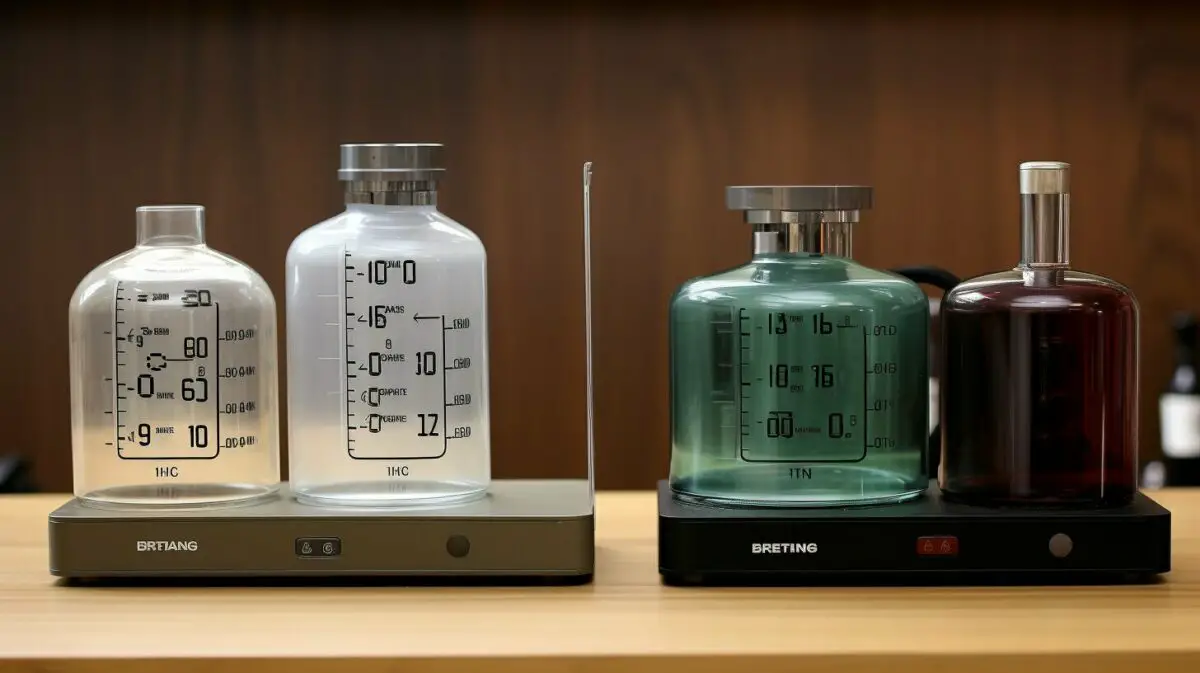
When it comes to converting between grams and pounds, precision is key. Understanding the exact conversion factor allows for accurate measurements in recipes and other applications. In the Imperial System, there are 453.592 grams in a pound. Conversely, in the metric system, we find that 0.00220462 pounds is equal to one gram.
The term “pound” derives from the Roman unit of measure known as Libra Pondo. The abbreviation “lbs” comes from the Latin word Libra. Throughout history, the weight of a pound has undergone various changes, but in the modern era, it has settled at approximately 453.592 grams.
The gram, on the other hand, was introduced in France following the French Revolution, and it has become a widely adopted unit of measurement for weight. It is used in many countries around the world, including the United States, to measure small amounts of ingredients with precision.
| Grams | Pounds |
|---|---|
| 1 | 0.00220462 |
| 10 | 0.0220462 |
| 100 | 0.220462 |
Accurate measurements in cooking and baking are essential for successful recipes. That’s why having the right equipment is crucial. A digital kitchen scale can provide precise measurements, ensuring that your ingredients are portioned correctly. Additionally, conversion charts and measuring cups/spoons are useful tools to have on hand.
While the United States and some other countries use the Imperial System, which includes pounds and ounces for weight measurement, the metric system is used worldwide. The metric system is based on the powers of ten, making scaling and conversion more straightforward. Grams are used to measure small amounts of ingredients, while pounds are typically used when larger quantities are involved.
Understanding the conversion between grams and pounds is not only important in the kitchen but also for various everyday applications. By knowing the exact conversion factor and using the right tools, you can ensure accurate measurements and achieve the desired results in your cooking and baking endeavors.
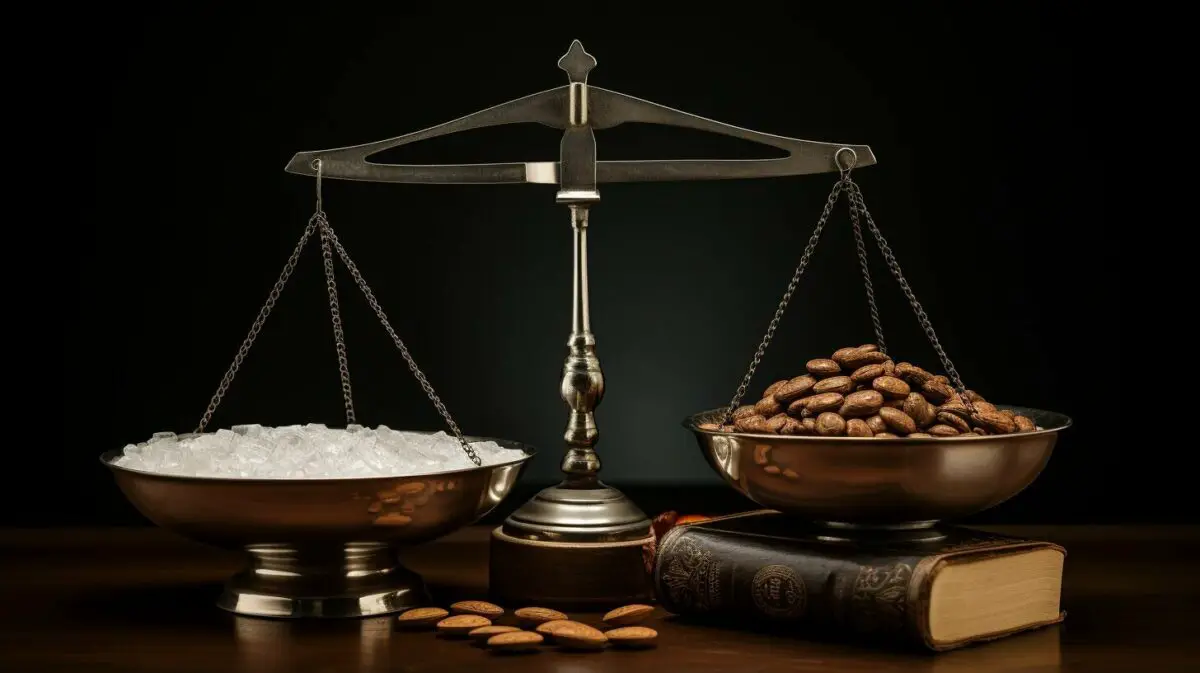
When it comes to cooking and baking, precision is key. Accurate measurements of ingredients can make the difference between a perfectly executed dish and a culinary disaster. Understanding weight conversions, specifically in terms of grams and pounds, is crucial for achieving consistent and reliable results in the kitchen.
Ingredient conversions play a vital role in recipe success. Whether you’re following a classic family recipe or experimenting with new flavors, knowing how to convert between grams and pounds ensures that your dish turns out as intended. This is particularly important when it comes to delicate pastries, where even a slight variation in measurement can lead to a different texture or taste.
To ensure accuracy in your recipes, having the right tools is essential. Investing in a digital kitchen scale allows you to measure ingredients in grams with precision. Conversion charts also come in handy, providing quick and reliable references for converting between grams and pounds. Additionally, using measuring cups and spoons designed for both metric and Imperial measurements simplifies the process even further.
It’s worth noting that the American cooking tradition relies heavily on the Imperial System, which uses pounds and ounces for weight measurements. However, the metric system, with its base unit of grams, is widely used in many countries around the world. Understanding both systems and being able to convert between them opens up a world of culinary possibilities, allowing you to explore recipes from various cultures with ease.
Grams to Pounds Conversion Table – How Many Grams Are in a Pound
| Grams | Pounds |
|---|---|
| 100g | 0.2205lb |
| 200g | 0.4409lb |
| 300g | 0.6614lb |
| 400g | 0.8818lb |
| 500g | 1.1023lb |
Having a conversion table is incredibly helpful when you need to convert specific gram measurements to pounds. This table provides a quick reference, allowing you to easily make the switch based on your recipe’s needs.
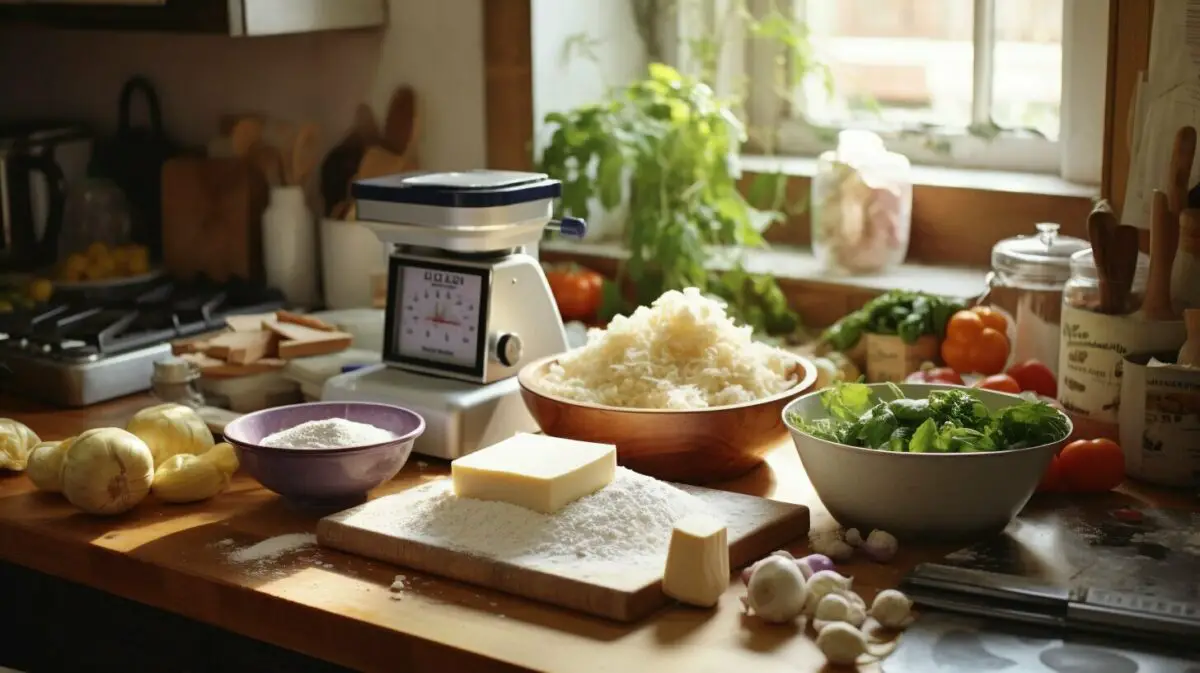
In conclusion, accurate measurements are essential in cooking and baking. Understanding how to convert between grams and pounds ensures precise ingredient proportions, resulting in consistent and delicious dishes. Investing in the right tools, such as a digital kitchen scale and conversion charts, makes the process even easier. So, the next time you find a recipe that uses grams or pounds, confidently venture into the kitchen armed with the knowledge of accurate ingredient conversions.
Scaling and Converting with Ease
In the world of measurement, the metric system stands out for its simplicity and ease of use. Unlike the Imperial System, which relies on different units for weight and volume, the metric system employs a consistent base unit for each type of measurement. This makes scaling and conversion a breeze, as everything is based on powers of ten.
The metric system’s foundation lies in the gram, a unit of measurement used for weight. Whether you’re weighing ingredients for a recipe or converting between different units, grams provide a precise and versatile solution. One gram is equivalent to one-thousandth of a kilogram, making it ideal for measuring both small and large quantities.
When it comes to scaling recipes, metric conversions offer convenience and accuracy. By moving decimal places and adjusting quantities in multiples of ten, you can easily increase or decrease your measurements to achieve the desired outcome. This streamlined process eliminates the need for complicated fraction calculations or the risk of imprecise measurements.
Furthermore, the metric system extends beyond weight. It also incorporates units like milliliters for liquids, centimeters for length, and Celsius for temperature. This cohesive approach to measurement makes it effortless to convert between different metric units and ensures consistency across various applications.
The Advantages of the Metric System
By embracing the metric system, you gain a universal language for measurement. Whether you’re cooking, conducting scientific experiments, or participating in international trade, using metric units simplifies communication and promotes accuracy. Its logical progression based on powers of ten enables quick mental calculations, making day-to-day tasks more efficient.
So, if you’re looking to streamline your measurements and calculations, consider incorporating the metric system into your kitchen or workplace. With its powers of ten, scaling and converting become second nature, and you’ll wonder how you ever managed without it.
| Metric System Advantages |
|---|
| Consistent base units |
| Easy scaling and conversion |
| Efficient decimal-based calculations |
| Universal language for measurement |
| Streamlined communication in international settings |
Conclusion – How Many Grams Are in a Pound
In conclusion, understanding the conversion between grams and pounds is essential for accurate weight measurements in various applications. With 453.592 grams in a pound, it is crucial to know how to convert between these two units of measurement. The term “pound” originates from the Roman unit Libra Pondo and pounds are abbreviated as “lbs” from the Latin word Libra.
Throughout history, the pound has undergone changes in weight, but it remains a widely used unit of measurement in the Imperial System, which is utilized in the United States and other countries. On the other hand, the gram, introduced in France after the French Revolution, is the standard unit for measuring weight in the metric system used worldwide.
When it comes to ingredient measurements in recipes, knowing how to convert grams to pounds accurately is crucial. Whether you are measuring small amounts of ingredients with grams or larger quantities with pounds, having the right equipment such as a digital kitchen scale, conversion charts, and measuring cups/spoons is essential for precise measurements.
While the Imperial System relies on pounds and ounces for weight measurement, the metric system uses grams for weight and milliliters for liquids. The metric system’s advantage lies in its use of powers of ten, making scaling and conversion easier to comprehend. Having a solid understanding of the conversion between grams and pounds will enable you to navigate both the metric and Imperial systems with ease.
FAQ
Q: How many grams are in a pound?
A: There are 453.592 grams in a pound.
Q: Where does the term “pound” come from?
A: The term “pound” comes from the Roman unit of measure Libra Pondo, and pounds are abbreviated as “lbs” from the Latin word Libra.
Q: How has the pound’s weight changed throughout history?
A: The pound has gone through various changes in weight throughout history.
Q: When was the gram introduced?
A: The gram was introduced in France following the French Revolution.
Q: Why is converting grams to pounds important?
A: Knowing how to convert grams to pounds is important for precise ingredient measurements in recipes.
Q: What systems of measurement use grams and pounds?
A: The Imperial System is used in the United States and other countries, while the metric system is used worldwide.
Q: What are grams and pounds used to measure?
A: Grams are used to measure small amounts of ingredients, while pounds are used to measure larger quantities.
Q: What equipment is needed for accurate measurements?
A: It is important to have the right equipment, such as a digital kitchen scale, conversion charts, and measuring cups/spoons, for accurate measurements.
Q: How does the Imperial System differ from the metric system?
A: The Imperial System uses pounds and ounces for weight measurement, while the metric system uses grams for weight and milliliters for liquids.
Q: What are the advantages of the metric system?
A: The metric system is based on the powers of ten, making scaling and conversion easier.
Source Links
Related Recipes:
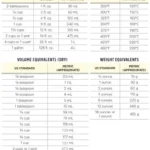 How Many Cups Are in a Liter: Unlocking the Mystery
How Many Cups Are in a Liter: Unlocking the Mystery
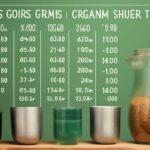 How Many Grams Are in an Ounce? (Perfect Measurement Conversion Guide)
How Many Grams Are in an Ounce? (Perfect Measurement Conversion Guide)
 How Many Milligrams Are in a Gram? (Perfect Measurement Conversion Guide)
How Many Milligrams Are in a Gram? (Perfect Measurement Conversion Guide)
 How Many Grams Are in a Kilogram? (Perfect Measurement Conversion Guide)
How Many Grams Are in a Kilogram? (Perfect Measurement Conversion Guide)
 How Many Milliliters in an Ounce? (Perfect Measurement Conversion Guide)
How Many Milliliters in an Ounce? (Perfect Measurement Conversion Guide)
 How Many Ounces in a Pound? (Perfect Measurement Conversion Guide)
How Many Ounces in a Pound? (Perfect Measurement Conversion Guide)
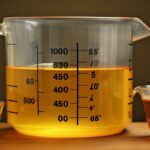 How Many Ounces Are in 750 ml? (Measurement Conversion Guide)
How Many Ounces Are in 750 ml? (Measurement Conversion Guide)
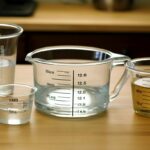 How Many Cups Are in a Liter? (Perfect Measurement Conversion Guide)
How Many Cups Are in a Liter? (Perfect Measurement Conversion Guide)



